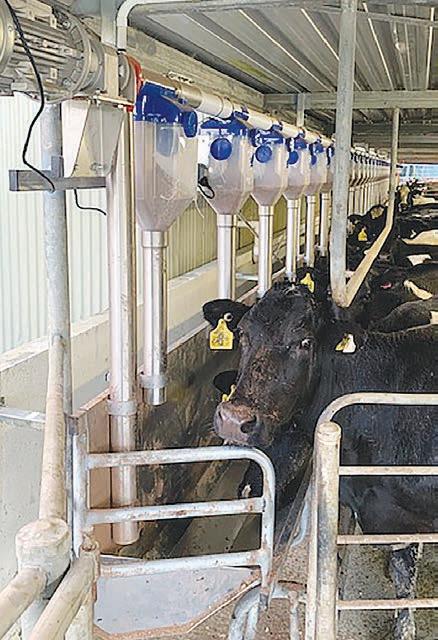
10 minute read
Women in agribusiness – Sarah Martelli
by AgriHQ
A case for lameness
By Gerald Piddock
A Taranaki vet has spent his career working on farms to solve the cow lameness puzzle but the puzzle is what makes it engrossing.
Watching Neil Chesterton investigating lameness on a dairy farm is akin to watching the American cop TV show CSI.
The semi-retired Taranaki-based veterinarian analyses lameness with the same zeal and meticulousness that his fictional counterparts on the small screen do when forensically examining a homicide crime scene.
There’s no blood, weapons, shootouts or montages of actors in laboratories staring through microscopes, solving the case.
Instead, there are poor track surfaces, dodgy slopes, poor stockmanship and badly designed yards that provide the evidence he needs to find the source of the problem.
For Chesterton, lame cows are the victim and the farm’s race, yards and other infrastructure are his crime scene.
Sometimes it’s not immediately apparent. It becomes a puzzle he is determined to solve, requiring multiple trips to a farm to find the answer.
But solving this puzzle was what made it so engrossing, Chesterton says.
“It is like being a detective. It’s looking at the problem and getting the information,” he says.
“It’s obsessive and when I find out, I often find something I never thought of before and it probably applies to another farm.”
But once the source is found and the risks to the cows are identified, a solution can be presented to the farmer.
The case then gets added to the knowledge he has accumulated over the nearly 50 years he has been in the veterinary industry and observing the risk factors of lameness in the industry.
Passing on that knowledge to farmers is the most rewarding thing he can do, he says.
He has become a familiar face in the dairy industry as the go-to expert on the causes and prevention of lameness in cows.
He semi-retired four years ago and apart from training seminars for recent graduate vets and for farmers, he dedicates his free time to researching lameness on dairy farms around NZ.
Lameness can become an expensive exercise for farmers if left unchecked.
According to DairyNZ, the financial impact of lameness is estimated at $250 per lameness case. For an average dairy farm this equates to almost $15,000 a year (average herd size 419 cows, average incidence 14%).
Neil Chesterton is a Taranaki veterinarian and New Zealand’s foremost expert on lameness in herds.
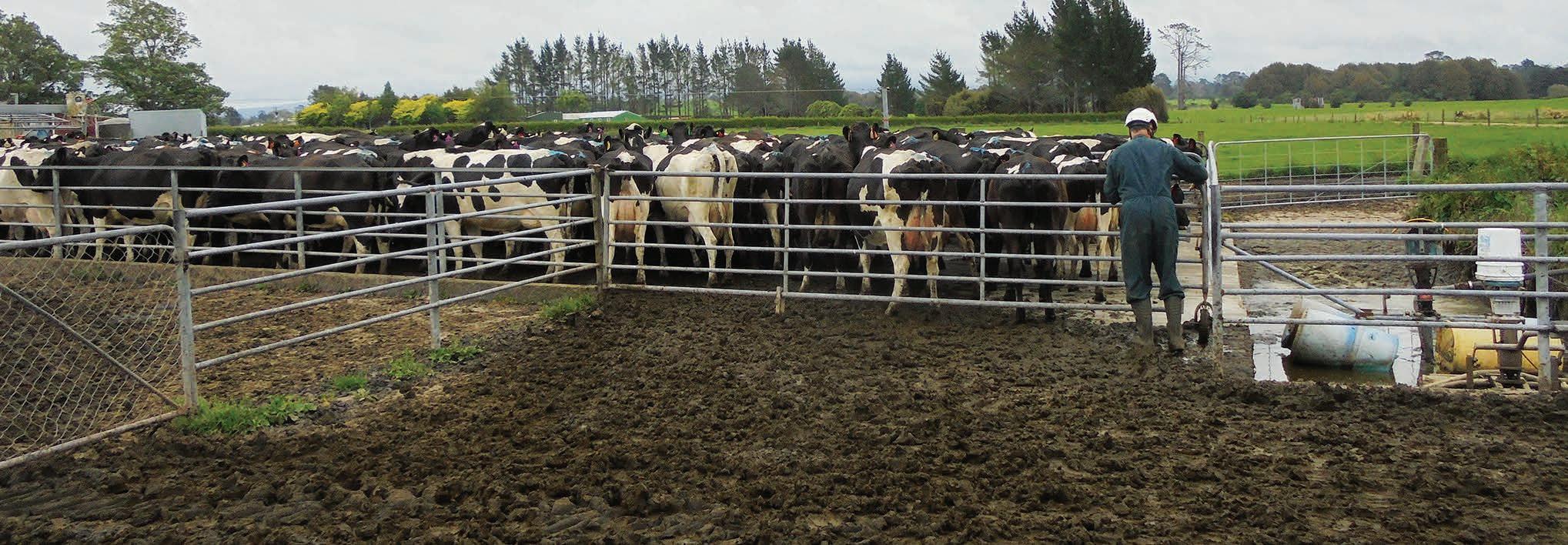
Chesterton was born in South Africa and moved to Australia when he was 11, where he obtained his veterinary qualification, specialising in large animals.
He moved to NZ in 1974 immediately after finishing his studies, working in Inglewood, Taranaki.
His original plan was to only stay for three years to get some international experience, but he fell in love with the country, he says.
While dairying was an established industry in Taranaki, farms were generally smaller and less intensive than they are today.
He didn’t set out to become an expert in lameness when he moved here, but many of the callouts he received as a young vet came from farmers asking him to treat cows with foot problems.
Luckily, his boss was experienced at recognising and treating lame cows and provided a good sounding board for him.
He was eager to know more about why it was such an issue within the dairy industry.
Continued page 29
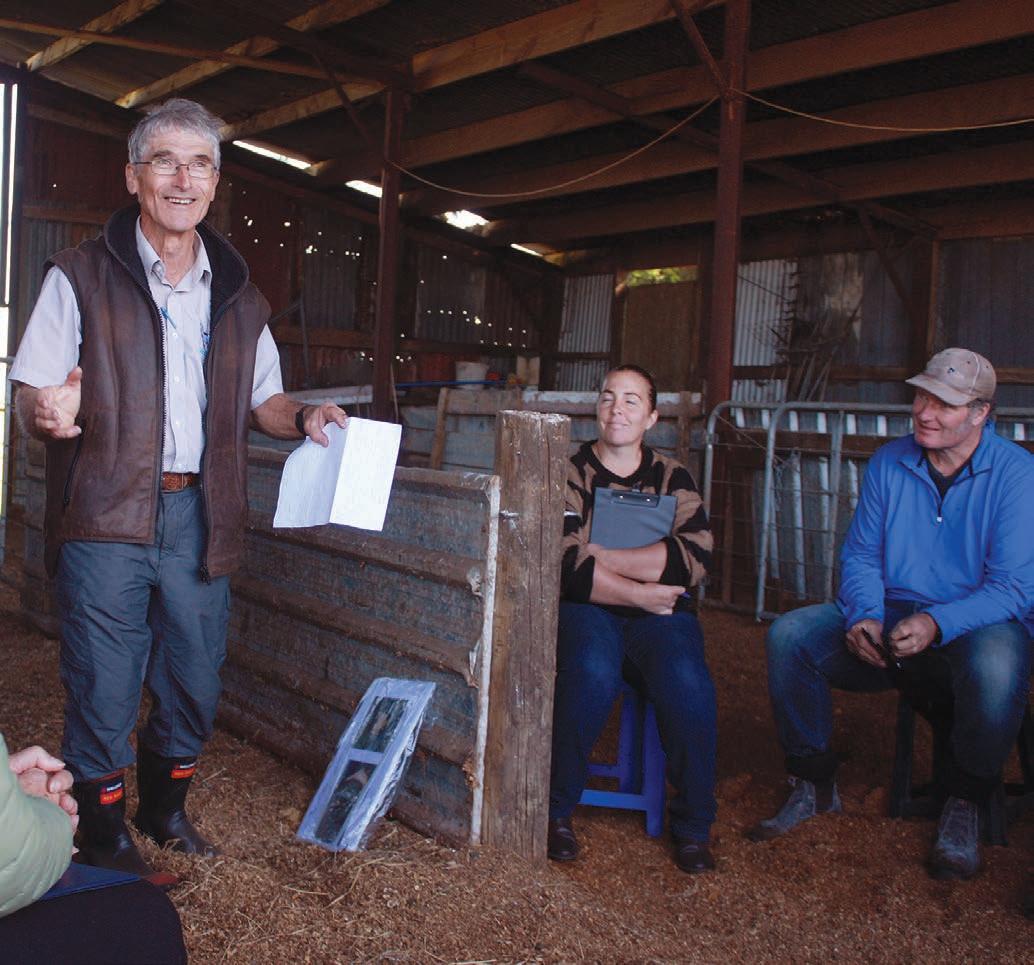
Neil Chesterton semi-retired four years ago and apart from training seminars for recent graduate vets and farmers, he dedicates his free time to researching lameness on dairy farms around NZ.
PLAN FOR THE SEASON AHEAD WITH CERTAINTY
There are few things in farming that are certain. But a great, reliable price for your farm supplies is now one thing you can be certain of. We’ve worked with our suppliers and leading brands to introduce the Farm Source Certainty Guarantee. It means you can be certain that our everyday low pricing won’t increase on a wide range of products and supplies until October. Which means you can budget with certainty.
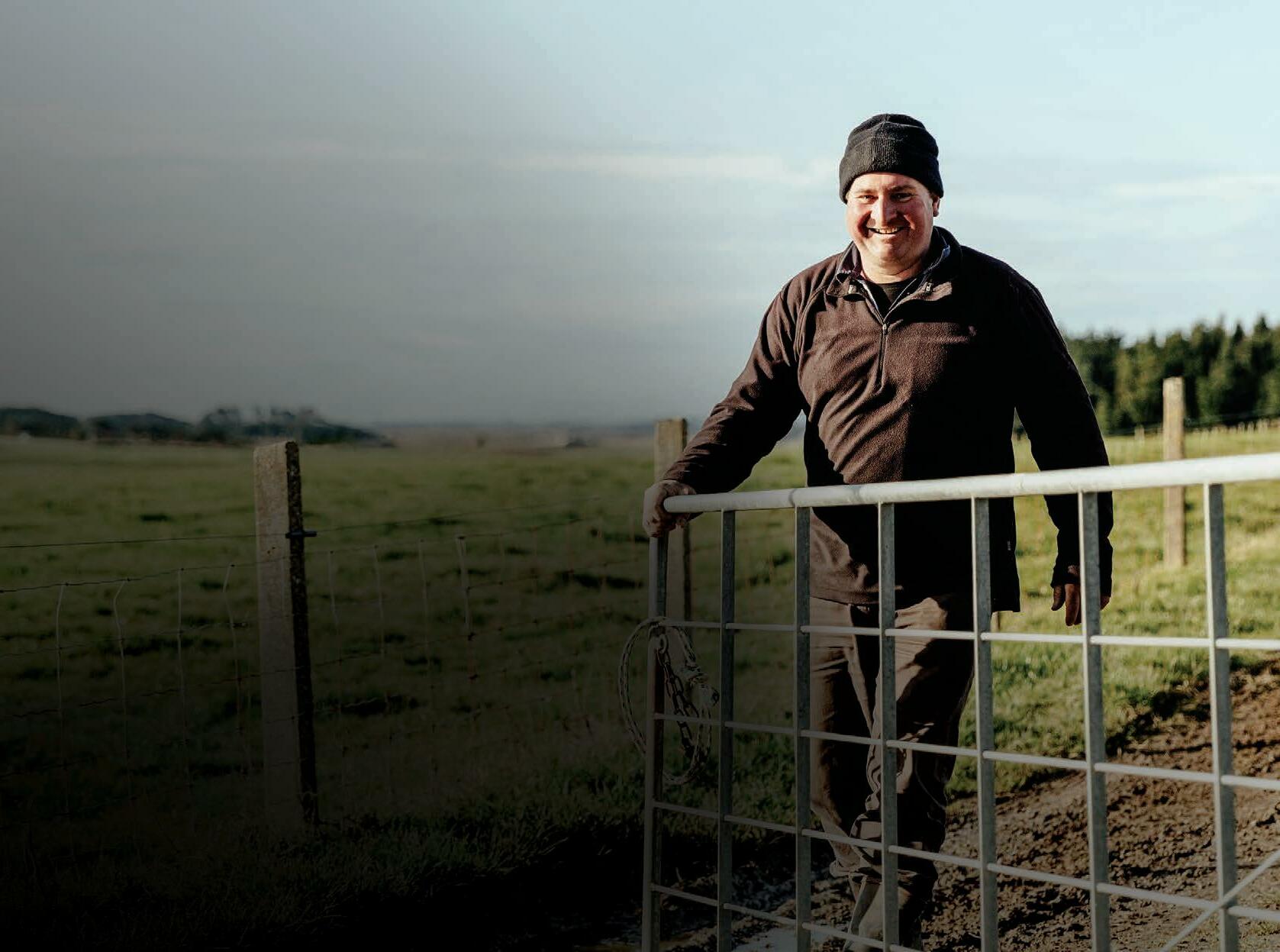
It’s another way we’re working to strengthen your bottom line.
Neil Chesterton was a guest speaker at a recent SMASH field day where he spoke on various aspects of lameness.
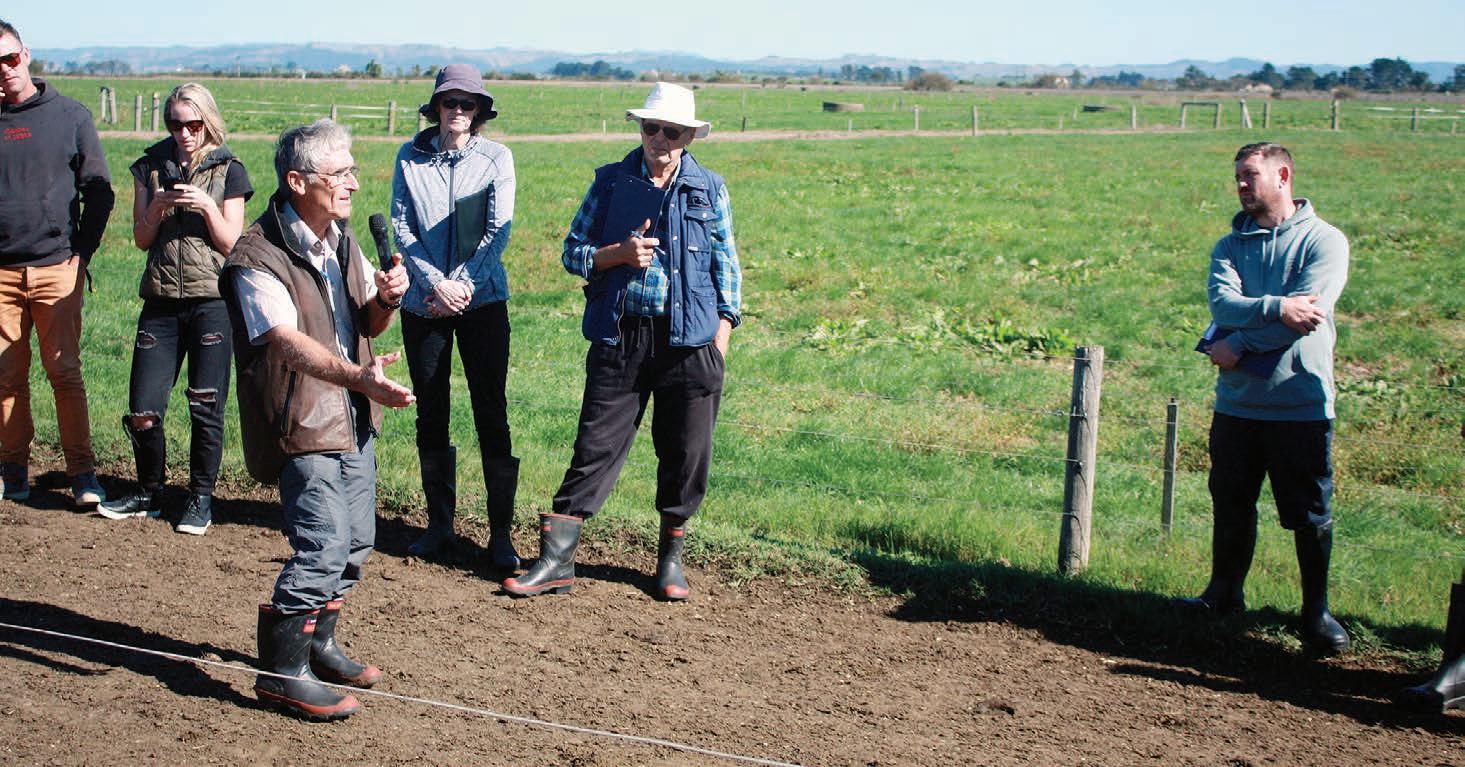
It was here that he discovered a problem.
At the time, much of the scientific literature around lameness causes and prevention was based on indoor farming systems commonly seen in the Northern Hemisphere.
Its findings and recommendations did not match what he was seeing out on farms every day and none of the research remotely matched anything to NZ outdoor farms.
He began his own research, recording in detail every instance of lame cows he came across.
“I started collecting data and writing down what I saw. I found that what I was seeing was different from other countries,” he says.
“I discovered that in New Zealand we only had four main lameness lesions and they were dramatically different in occurrence to indoor systems.”
“I kept collecting and I am still collecting – I never stopped.”
In the early 1980s, he received funding for a larger study on lameness. He contacted all of the neighbouring vet practices in the region, asking them if he could observe each vet’s three farms with the least lameness and the three worst farms.
“I had previously asked my own farmers what they thought caused lameness on their farm. And they had about 58 different risk factors,” he says.
“I wrote down all the 58 possible risk factors and I went to 60 farms around Taranaki over three years. I spent a full day at each farm watching milkings and herding, scoring all the risk factors and writing down what I could see.”
The farmers, he says, were happy for him to come along and observe because they recognised the importance of the research.
A summary of the research, which was published in The New Zealand Veterinary Journal in 1986 was the first one of its kind, where lameness and its risk factors were looked at from a NZ context.
That was the beginning of his passion with diagnosing and advocating for preventing lameness.
The two most significant risk factors from those 58 reasons were the ways the cows were handled by the farmer and what the track that the cows had to walk on every day to be milked was made of.
“Examining the track was fairly straightforward, but farmer stockmanship raised further questions around cow behaviour”, he says.
So he went back to 10 of those farms on 15 occasions to watch the cows walk down the race and through the milking shed.
“I wanted to know what was happening, so I painted each cow’s number on her side and rump. I then sat on a hill or up a tree and recorded their number in order as they walked along the track towards the milking shed. Then after milking, I recorded their number as they came out,” he says.
I repeated this at 15 different milkings at each of the 10 farms.”
He noticed that the numbers were consistently in a different order coming into the yard and leaving the milking shed. In the yards, the cows had changed their arrival order to a milking order. It had to have something to do with their dominance behaviour, he thought.
Determined to find answers, he looked at a subset of 20 cows within the herd of each of the farms and watched the animals fight in the yards. He did this three times through the season and the pecking order was consistent.
What he learned was that cows needed more space to move around and change their positions in the yard. The farmers with lower levels of lameness were not putting pressure on the cows in the yards.
“It all started to make sense,” he says.
It was a watershed moment that made him realise the importance of cow behaviour when investigating farms for the reasons for lameness.
“Those two studies were so interesting. It was stuff not written about before and it was happening right in front of our eyes. The farmers loved it because it made common sense. Unbeknown they had seen it, but hadn’t done anything about it,” he says.
And now they could because the solutions were so simple, he says.
As dairying took off in NZ and farms and herds got bigger and more intense,
the combination of larger-scale, handsoff farm owners and inexperienced staff meant lameness risks were often overlooked until it became an issue in the herd.
On the plus side, farmer attitudes to lameness are improving as more vets pass on their knowledge to farmers, he says.
“With herds getting bigger, there’s more pressure on the feet. If we could take the pressure off the feet, get the cow flow (to be) more gentle, it goes down,” he says.
“If you put the pressure on, it goes up.”
He points to a recent case on a farm that he visited.
“They were doing everything well, except I was suspicious about the milking yard, so I got up at 4am for the third time to watch it in the dark when they couldn’t see me,” he says.
“I could see the frustrations in the people: the cows didn’t want to come onto the shed quickly and they couldn’t resist giving them a push with the backing gate.”
Good cow management and stockmanship plays a huge role in reducing lameness risks regardless of the farm system. People often blamed feed intake, but Chesterton says there is little evidence to suggest it is a factor in NZ.
“It’s the pressure on the foot that’s the main thing. Worry about feed if you have to, but first look at the distance walked, the pressure and the wearing of the foot. Those things are number one,” he says.
Farmers could help themselves by accurately recording instances of lameness in the herd, which can be easily done using the DairyNZ healthy hoof app. This information made investigating the source of the lameness a lot more accurate, he says.
Lameness in many ways was a deceptive term because it has so many definitions, he says.
“Lameness is like sickness. It’s a meaningless word. It could mean that it’s dislocated its shoulder or it’s got a stone stuck in there. We need to know why she is lame,” he says.
While attitudes have generally improved, he still comes across some really bad cases on farms where the farm owners, for whatever reason, just don’t ask for help.
“They’ll just say, ‘This farm is a lameness farm’. It’s a nightmare for a farmer, but it’s put in the ‘too hard’ basket. They’ll give them some penicillin and see how they go rather than get help,” he says.
“It’s an animal welfare issue and there’s nothing more painful than lameness for the cow.” It will always be a risk on NZ farms because of the outdoor style of farming and because staff may shift from a lowrisk farm where they do not have to worry about lameness to a different farm where the risks are greater.
“The ones that understand cow behaviour and get it right, they talk about it,” he says. For now, he says he will keep solving the lameness puzzle on farms and keep talking about it with groups of farmers.
“It is great being semi-retired. I don’t have to worry about all the other problems that happen to cows. I’ll just keep looking at the feet and let the other vets worry about what happens higher up.” n
THE NEW BLUE DISPENSER WITH STAINLESS STEEL DROPPERS
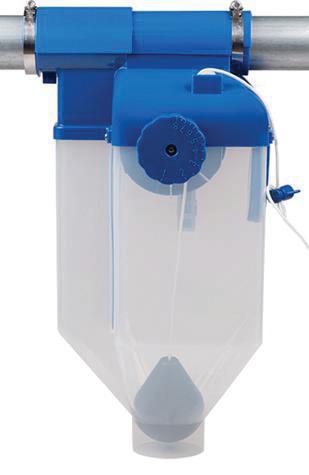
• New installations • Upgrades • Nationwide installs – great back up support

